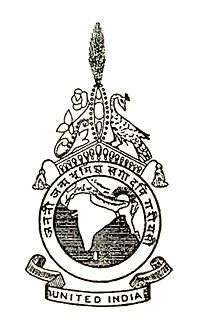Ullaskar Dutta
Ullaskar Dutta (Bengali: উল্লাসকর দত্ত) (16 April 1885 – 17 May 1965) was a Bengali Indian revolutionary who manufactured bombs intended for use against British colonial officials.
Early life
Ullaskar was born in the village of Kalikachha in the Brahmanbaria district of present-day Bangladesh. His father Dwijadas Dutta was a member of the Brahmo Samaj and had a degree in Agriculture from the University of London. After passing entrance examination in 1903, he took admission in the Presidency College, Kolkata. However, he was rusticated from the college for hitting a British professor, Professor Russell, who made some derogatory comment about Bengalis.
Revolutionary activities
Ullaskar was a member of the Jugantar party and he became expert in bomb-making. Khudiram Bose used a bomb manufactured by Ullaskar and Hem Chandra Das [1] in an attempt to murder brutal magistrate, Kingsford. However, police caught many members of the Jugantar group including Ullaskar Dutta, Barindra Ghosh and Khudiram.
Trial and sentence
In the famous Alipore bomb case, Ullaskar was arrested on 2 May 1908 and he was sentenced to death by hanging in 1909. Later, on appeal, the verdict was reduced to transportation for life and he was deported to the Cellular Jail in Andaman.
Cellular jail
Ullaskar was subjected to brutal torture in the Cellular Jail and is said have lost his mental balance. He was set free in 1920 and he returned to Kolkata.
Later life
Ullaskar was again arrested in 1931 and sentenced to 18 months imprisonment. He returned to his home village Kalikachha when colonial rule ended in 1947. After a lonely life of 10 years, he returned to Kolkata in 1957. After returning to Kolkata he married a physically challenged woman and went to Silchar, the district town of Cachar District of Assam and spent his later life there. He died on 17 May 1965.[2] Recently, two roads in Kolkata and Silchar were named after him.
Works
- Dvipantarer Katha (The Tale of Deportation)
- Amar Karajiban (My Prison Life) (translated into English as Twelve Years of Prison Life in 1924).
References
- ↑ Government of India, Home Political Department A. Proceedings, May 1908, Nos. 112-150
- ↑ Official Report, Assam Legislative Assembly
External links
- Litu, Shekh Muhammad Sayed Ullah (2012). "Datta, Ullaskar". In Islam, Sirajul; Jamal, Ahmed A. Banglapedia: National Encyclopedia of Bangladesh (Second ed.). Asiatic Society of Bangladesh.
- Cellular jail website
:
